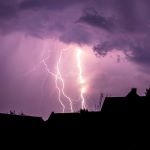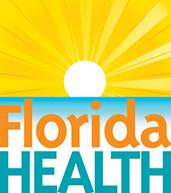It's a New Day in Public Health.
The Florida Department of Health works to protect, promote, and improve the health of all people in Florida through integrated state, county, and community efforts.
Lightning Safety
Contact: Florida Health
- 850-245-4444
- health@flhealth.gov
-
Mailing Address
Florida Health
4052 Bald Cypress Way
Tallahassee, FL 32399
Florida Lightning Preparedness
 Florida, known as the lightning capital of the United States, experiences more lightning strikes per square mile than any other state. With an average of 1.2 million strikes annually, Florida's frequent thunderstorms pose serious risks to people, pets, and property. Understanding lightning safety is essential to protect yourself and your community during these severe weather events.
Florida, known as the lightning capital of the United States, experiences more lightning strikes per square mile than any other state. With an average of 1.2 million strikes annually, Florida's frequent thunderstorms pose serious risks to people, pets, and property. Understanding lightning safety is essential to protect yourself and your community during these severe weather events.
The Dangers of Lightning
Lightning is one of nature’s most powerful phenomena, with each bolt containing up to 1 billion volts of electricity. It can reach temperatures hotter than the surface of the sun—about 50,000 degrees Fahrenheit. These intense bursts of energy can cause severe burns, structural damage, and even wildfires. Additionally, approximately 10% of people struck by lightning lose their lives, highlighting the need for proper precautions.
Key Lightning Safety Tips
Lightning storms can pose significant risks to your safety, both indoors and outdoors. By following essential precautions, you can reduce the danger of lightning strikes and protect yourself, your loved ones, and your property.
Below are practical safety tips to keep in mind during a storm.
- Indoor Safety During a Lightning Storm
- Outdoor Safety During a Lightning Storm
- Avoid using wired electronics, such as phones or computers, as lightning can travel through electrical systems.
- Stay away from windows, doors, and concrete walls to reduce the risk of injury from lightning and wind damage.
- Refrain from touching water or plumbing fixtures, as lightning can conduct through pipes.
- If you hear thunder, lightning is close enough to pose a danger. Seek shelter immediately in a fully enclosed building or a hard-topped vehicle.
- Avoid open areas, tall objects, and metal structures like fences and poles, which can act as lightning rods.
- Never take shelter under trees, as they can conduct electricity and may cause injury if struck.
Lightning Myths and Facts
- Myth: Lightning never strikes the same place twice.
Fact: Lightning often strikes the same place multiple times, especially tall or isolated objects like skyscrapers or trees. - Myth: Rubber tires on cars protect you from lightning.
Fact: It’s the metal frame of a car that protects you by directing electricity into the ground, not the tires. - Myth: You are safe indoors during a storm.
Fact: While indoors is safer, risks still exist. Avoid wired electronics, plumbing, and windows.
Additional Resources
- Florida Lightning Safety Tips
- National Weather Service Lightning Safety Resources
- Ready.gov Thunderstorm and Lightning Preparedness
Stay Safe During Storms
Lightning strikes are not only a fascinating natural phenomenon but also a serious hazard. By staying informed, debunking myths, and practicing safety measures, you can significantly reduce the risks associated with lightning. Be prepared, stay safe, and ensure the safety of your loved ones during Florida’s frequent storms.
Disclaimer: The links and content provided on this page are for informational purposes and your convenience. The Florida Department of Health (DOH) does not endorse, approve, or guarantee the products, services, or opinions offered on external websites. Furthermore, the DOH is not responsible for the accuracy, content, or availability of these external sites. For questions or concerns, please contact the external site directly.



Connect with DOH